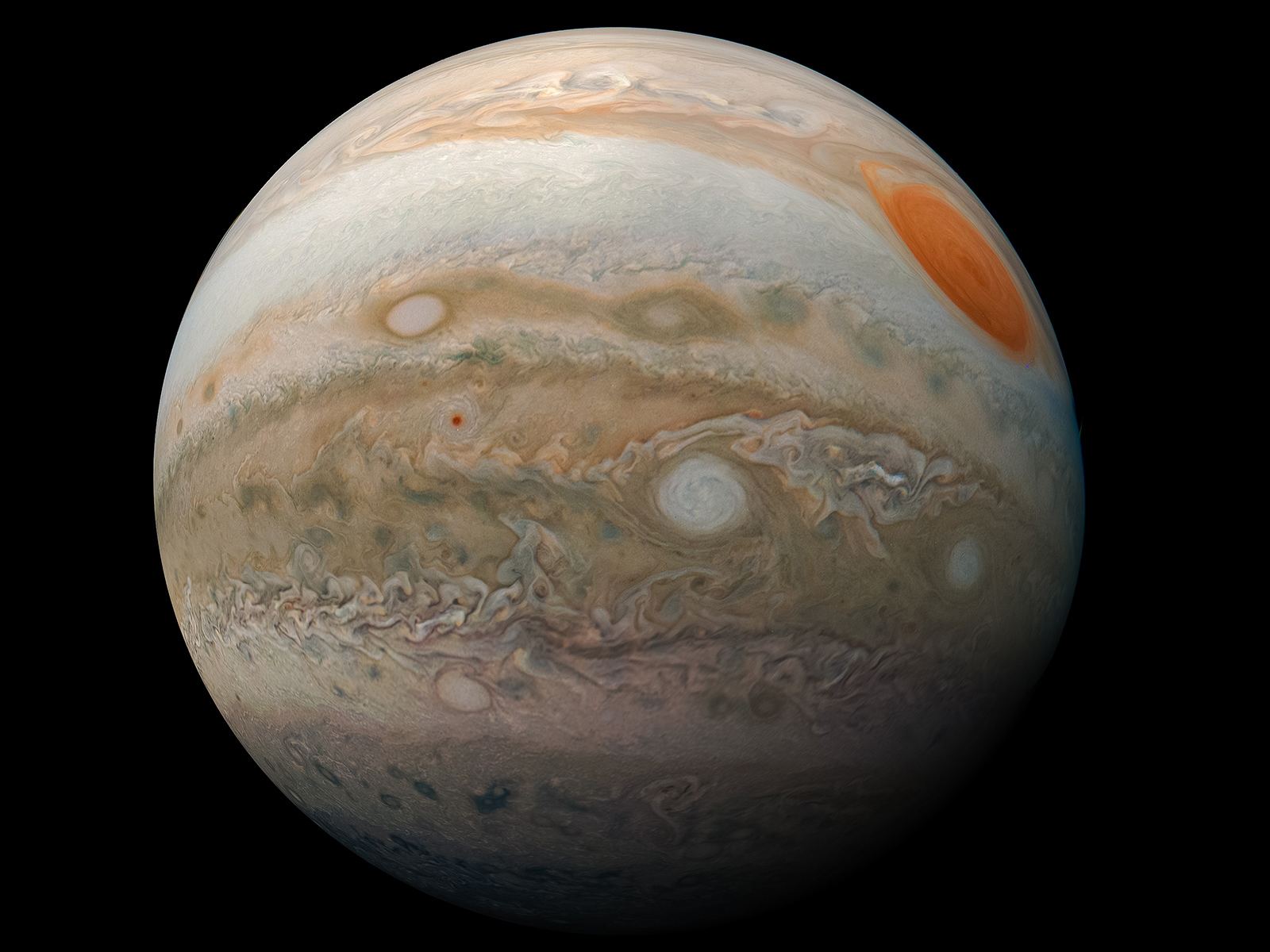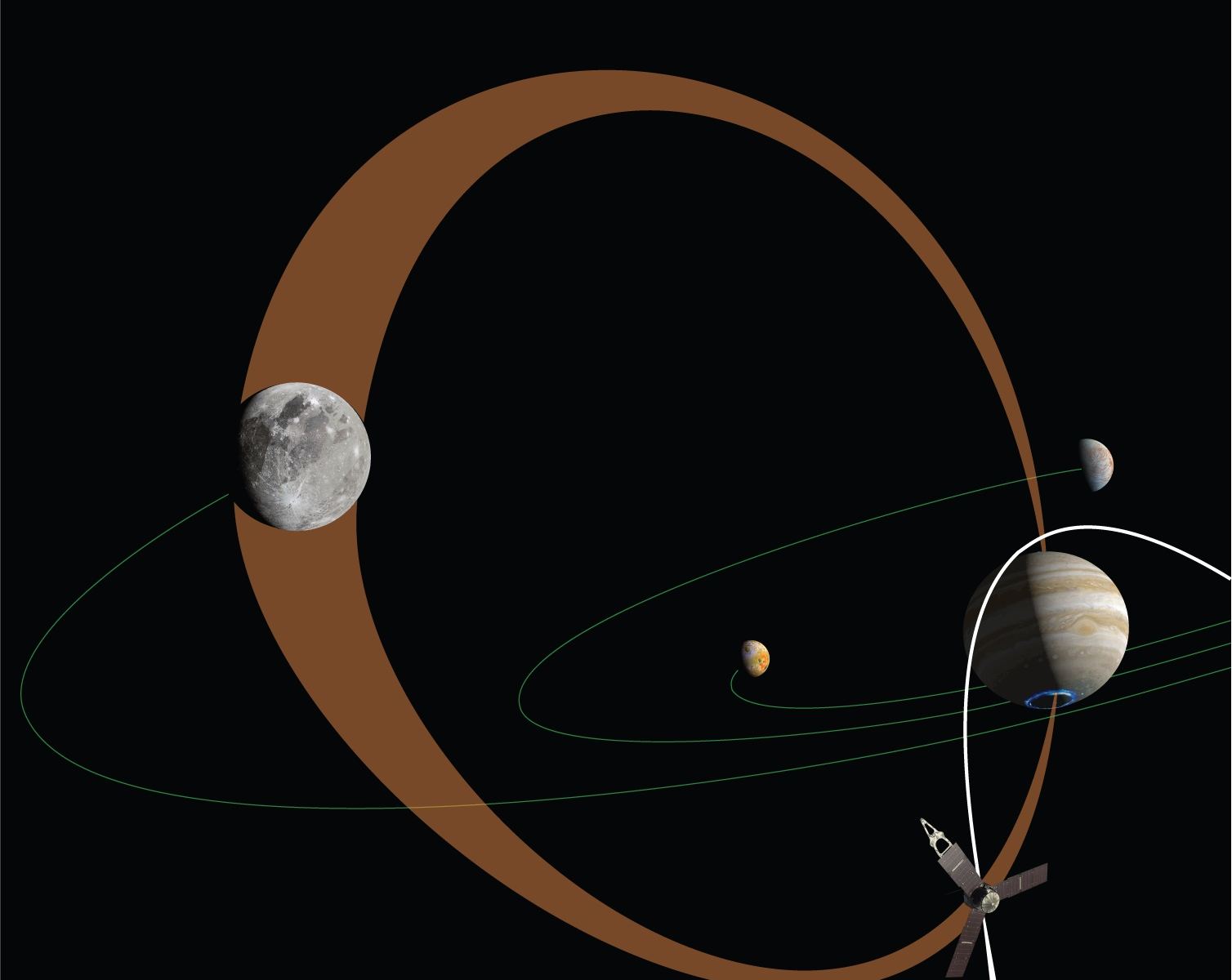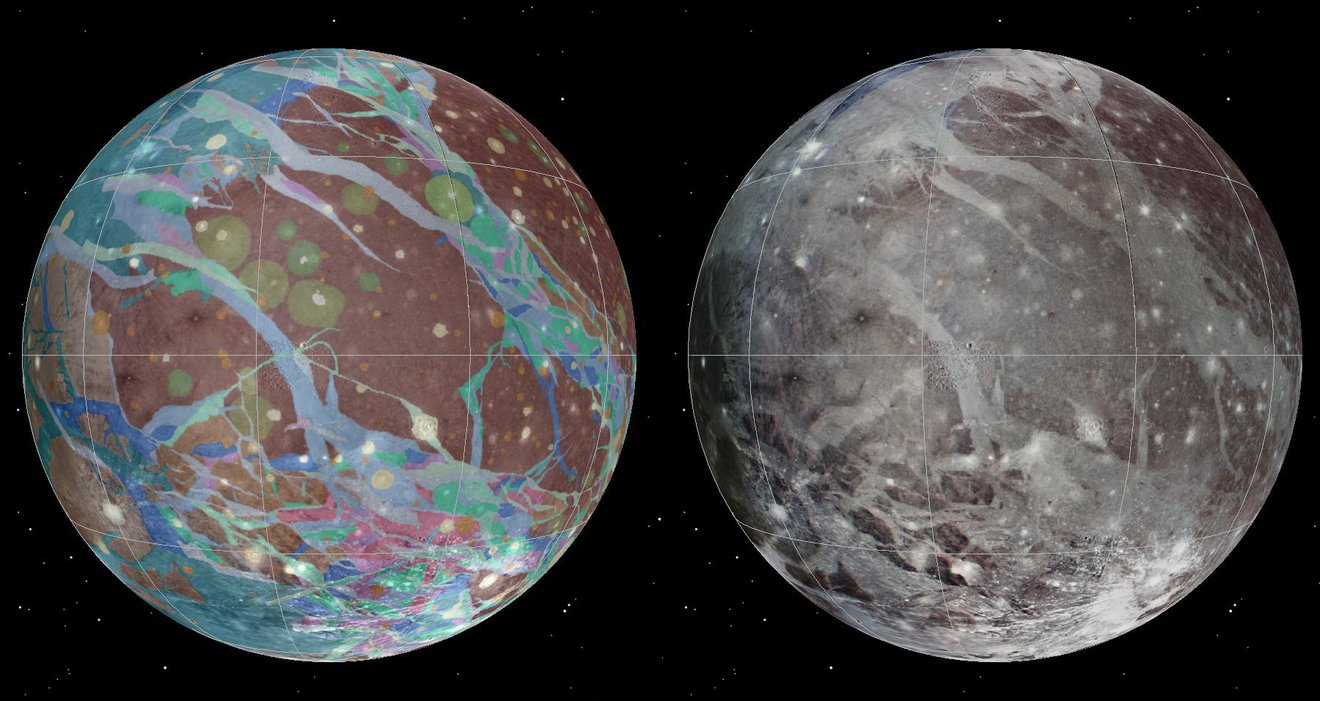In a recent study published in the Journal of High Energy Physics, two researchers from Brown University demonstrated how data from past missions to Jupiter can help scientists examine dark matter, one of the most mysterious phenomena in the universe. The reason past Jupiter missions were chosen is due to the extensive amount of data gathered about the largest planet in the solar system, most notably from the Galileo and Juno orbiters. The elusive nature and composition of dark matter continues to elude scientists, both figuratively and literally, because it does not emit any light. So why do scientists continue to study this mysterious—and completely invisible—phenomena?
Continue reading “Jupiter Missions Could Also Help Search for Dark Matter”Juno’s Entire 42nd Flight Past Jupiter in One Amazing Mosaic

On May 23, 2022, the Juno spacecraft made another close pass of Jupiter, with its suite of scientific instruments collecting data and its JunoCam visible light camera snapping photos all the while. This close pass, called a perijove, is the 42nd time the spacecraft has swung past Jupiter since Juno’s arrival in 2016.
Continue reading “Juno’s Entire 42nd Flight Past Jupiter in One Amazing Mosaic”Jupiter and Ganymede are Connected by Magnetic Fields
On July 5th, 2016, NASA’s Juno spacecraft arrived at Jupiter and began its four-year mission (which has since been extended to 2025) to study the gas giant’s atmosphere, composition, magnetosphere, and gravitational environment. Juno is the first dedicated mission to study Jupiter since the Galileo probe studied the system between 1995 and 2003. The images and data it has sent back to Earth have revealed much about Jupiter’s atmosphere, aurorae, polar storms, internal structure, and moons.
In addition, the Juno mission has allowed astronomers to learn more about how magnetic interaction between some of Jupiter’s moons and its atmosphere leads the gas giant to experience aurorae around its northern and southern poles. After analyzing data from Juno’s payload, a team of researchers from the Southwest Research Institute (SwRI) observed how streams of electrons from Ganymede (Jupiter’s largest moon) leave an “auroral footprint” in Jupiter’s atmosphere.
Continue reading “Jupiter and Ganymede are Connected by Magnetic Fields”Just Look at the Jaw-Dropping Detail of These Storms on Jupiter
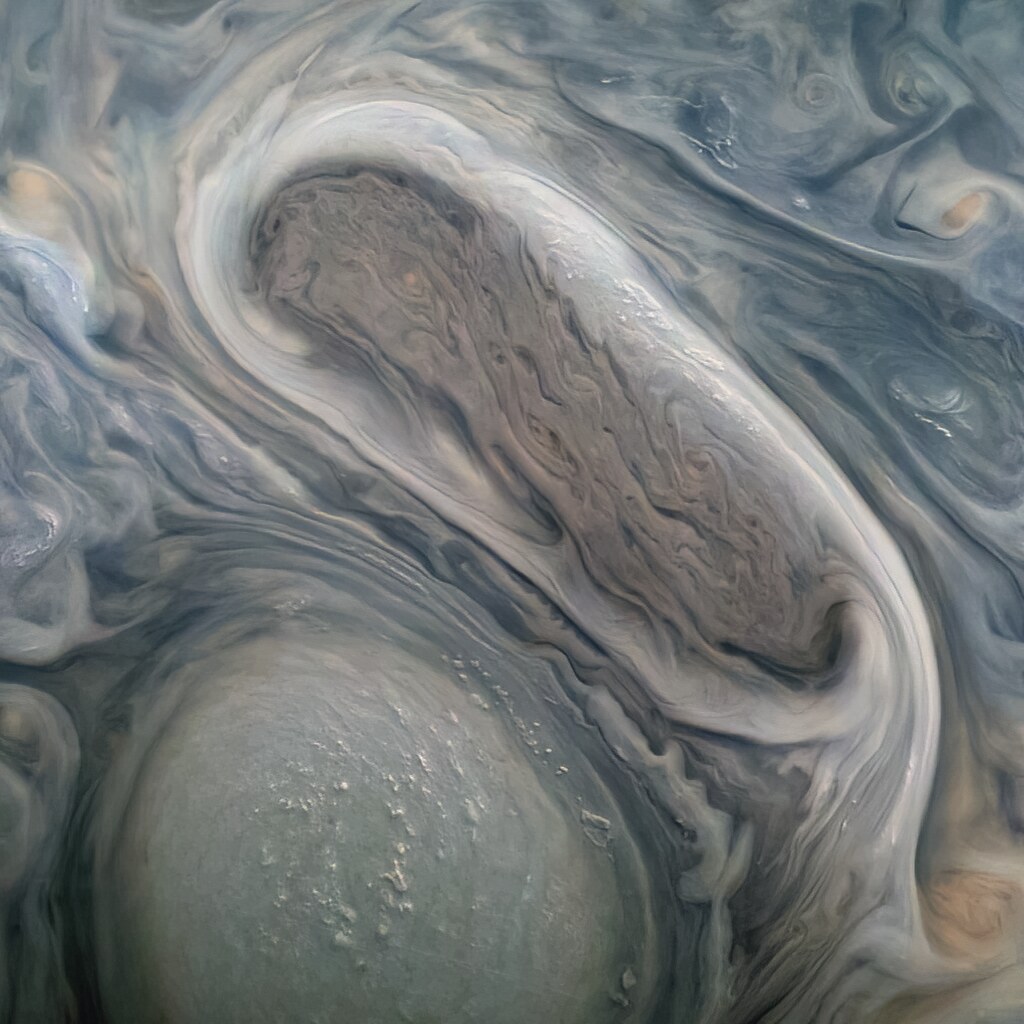
The latest images from the Juno mission at Jupiter includes views of giant storms and vortexes on the gas giant world in amazing detail.
Continue reading “Just Look at the Jaw-Dropping Detail of These Storms on Jupiter”Ganymede in Infrared Taken During Juno’s Most Recent Flyby
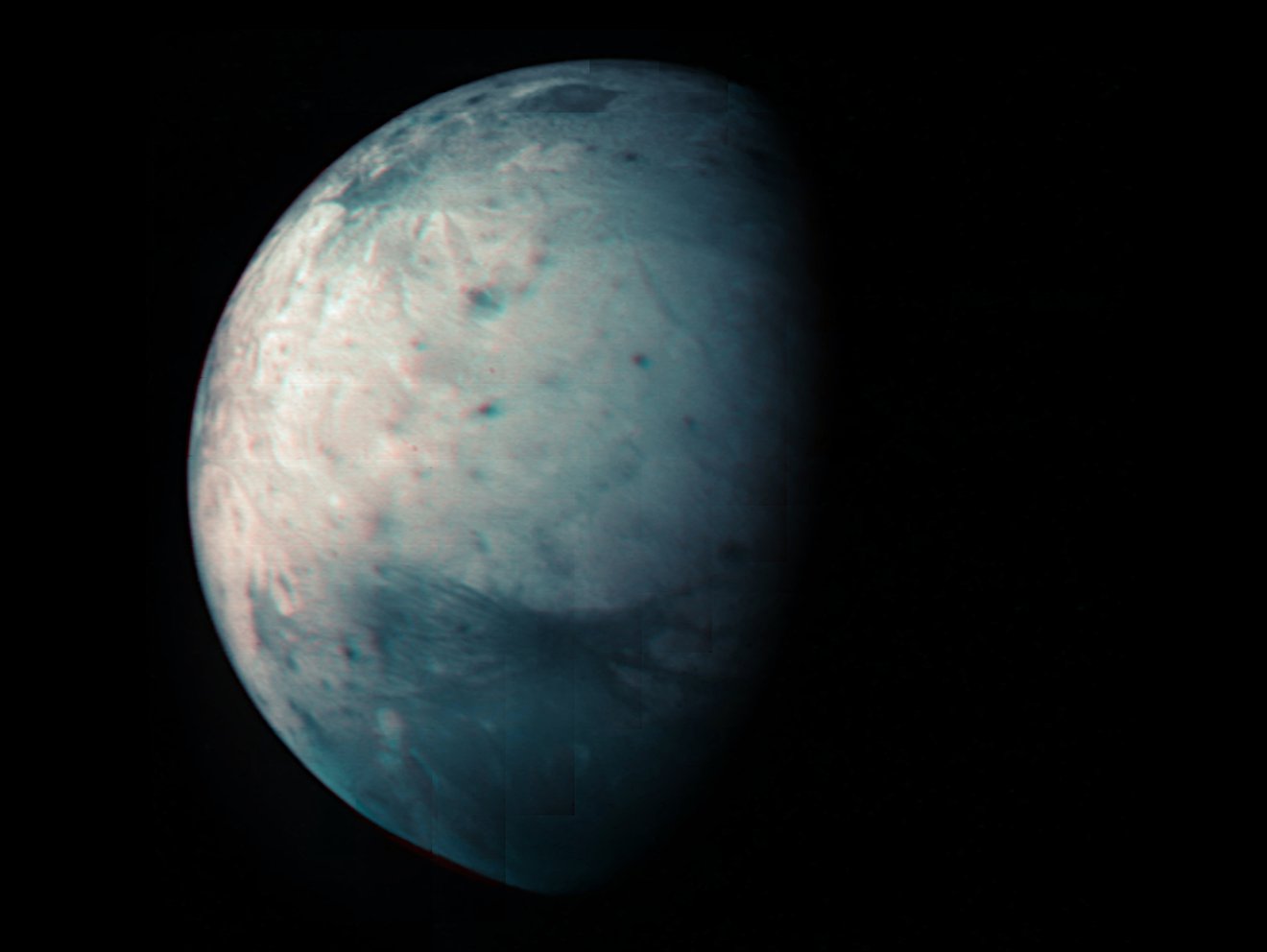
On July 20th, 2021, NASA’s Juno spacecraft conducted a flyby of Jupiter’s (and the Solar System’s) largest moon, Ganymede. This close pass was performed as part of the orbiter’s thirty-fourth orbit of the gas giant (Perijove 34), which saw the probe come within 50,109 km (31,136 mi) of the moon’s surface. The mission team took this opportunity to capture images of Ganymede’s using Juno’s Jovian Infrared Auroral Mapper (JIRAM).
These were combined with images acquired during two previous flybys to create a new infrared map of Ganymede’s surface, which was released in honor of the mission’s tenth anniversary (which launched from Earth on Aug. 5th, 2011). This map and the JIRAM instrument could provide new information on Ganymede’s icy shell and the composition of its interior ocean, which could shed led on whether or not it could support life.
Continue reading “Ganymede in Infrared Taken During Juno’s Most Recent Flyby”This is the View From Juno During its Flyby of Ganymede and Jupiter
Visualizations shape how we perceive space exploration. Whether it’s the Pale Blue Dot, the Hubble Ultra Deep Field, Earthrise, or any other myriad images captured as part of this great endeavor, they all help inspire the next generation of explorers. Now, with advances in image capture and processing technology, we can finally start to take the next step in those visualizations – video. Ingenuity was recently captured on video during its first flight a few months ago. And this week, NASA released a breathtaking video of Juno’s view of Jupiter and Ganymede, one of its moons, as it flew past the gas giant.
Continue reading “This is the View From Juno During its Flyby of Ganymede and Jupiter”Finally! New Pictures of Ganymede, Thanks to Juno
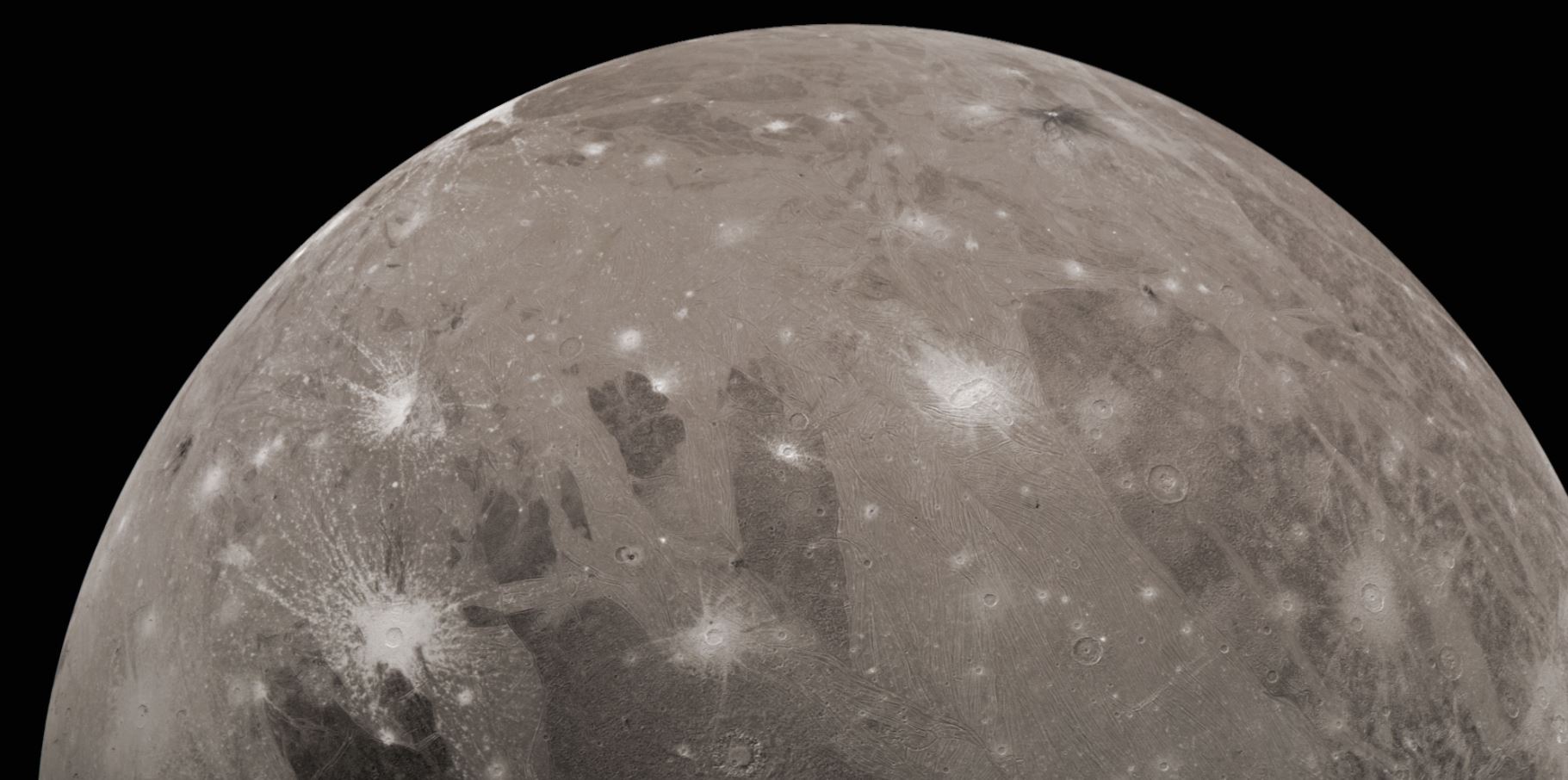
Well, hello there old friend! This week the Juno mission to the Jupiter system made the first close flyby of Jupiter’s giant moon Ganymede, and as you might guess, the images are spectacular. This is the first time we’ve seen a close-up view of the Solar System’s largest moon since the Galileo mission 20 years ago. Voyager gave us the first views of Ganymede 40 years ago. Now, planetary scientists will be able observe any changes in Ganymede’s surface over time.
But first, the image editing gurus back on Earth are having a go at the raw images sent back by Juno. Our lead image comes from Gerald Eichstädt, who worked his magic to bring out the details of Ganymede, and it’s a stunner.
Continue reading “Finally! New Pictures of Ganymede, Thanks to Juno”Next up, Juno has Ganymede in its Sights
NASA’s Juno mission is set for a close encounter with the Solar System’s largest moon, Ganymede, on Monday. This will be the first flyby of the icy world since the Galileo and Cassini spacecraft jointly observed the moon in 2000. New Horizons also got a quick snap of Ganymede as it slingshotted around Jupiter on its way out to Pluto in 2007, but from a distance of 3.5 million kilometers away. Juno’s pass on Monday will get much closer, approaching within 1038 kilometers of the surface.
Continue reading “Next up, Juno has Ganymede in its Sights”Stare Straight Down Into a Giant Storm on Jupiter
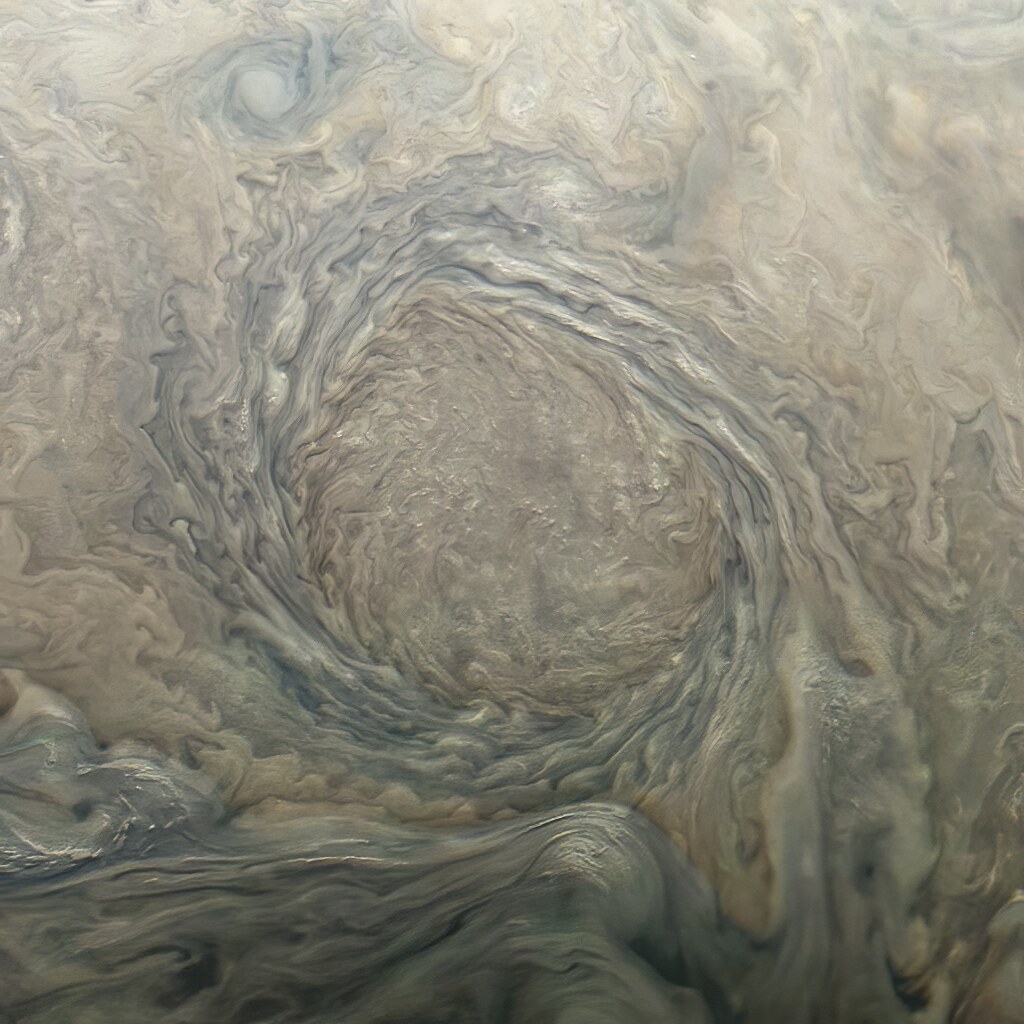
A new batch of images recently arrived at Earth from JunoCam, the visible light camera on board the Juno spacecraft at Jupiter. The camera has provided stunning views of the gas giant world since the spacecraft’s arrival in 2016. Citizen scientists and imaging enthusiasts act as the camera’s virtual imaging team, participating in key steps of the process by making suggestions of areas on Jupiter to take pictures and doing the image editing work.
This lead image, edited by Kevin Gill, is another stunner: a look straight down into a giant storm.
And we like Kevin’s attitude about this whole process:
Continue reading “Stare Straight Down Into a Giant Storm on Jupiter”Galileo’s Probe Discovered a Mystery at Jupiter, Juno Finally Helped Solve it
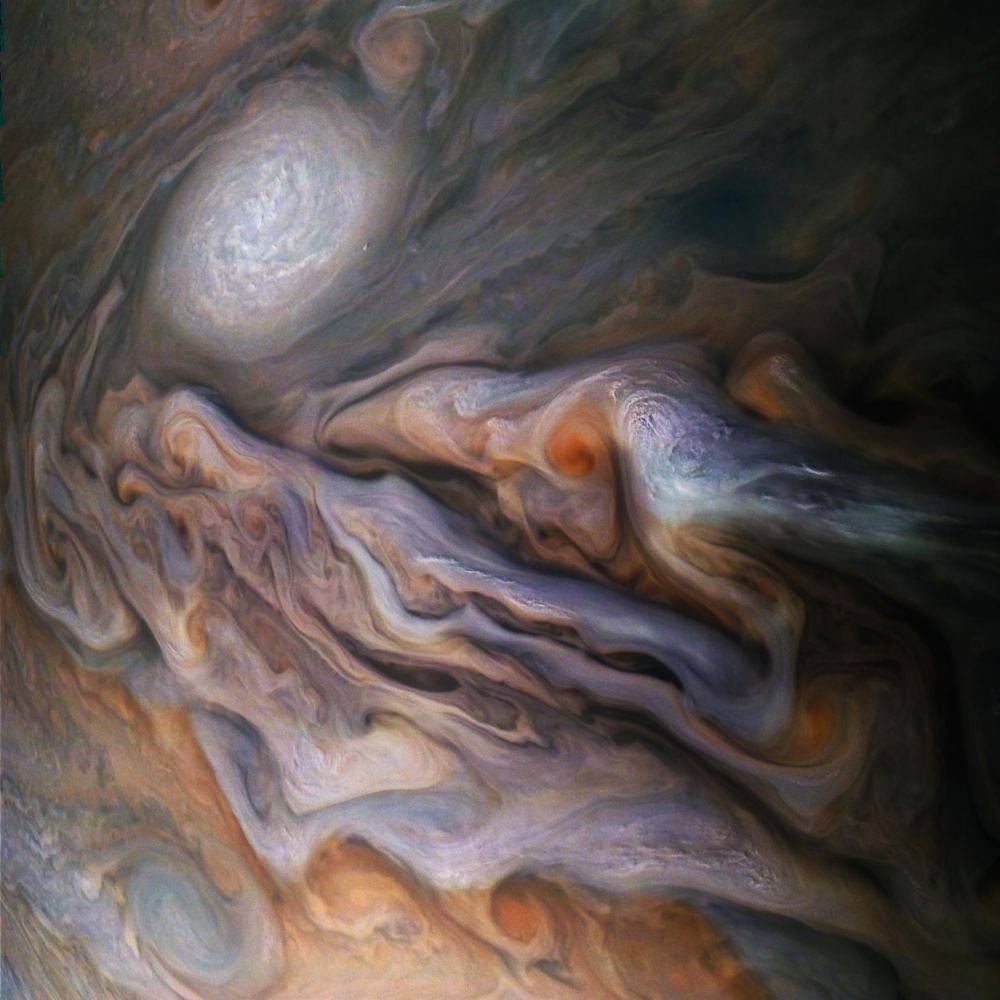
In 1995, NASA’s Galileo mission dropped a probe into the atmosphere of Jupiter and found it to be far drier than expected. In 2020, NASA’s follow-up mission Juno explained the mystery: it involves mushballs.
Continue reading “Galileo’s Probe Discovered a Mystery at Jupiter, Juno Finally Helped Solve it”
